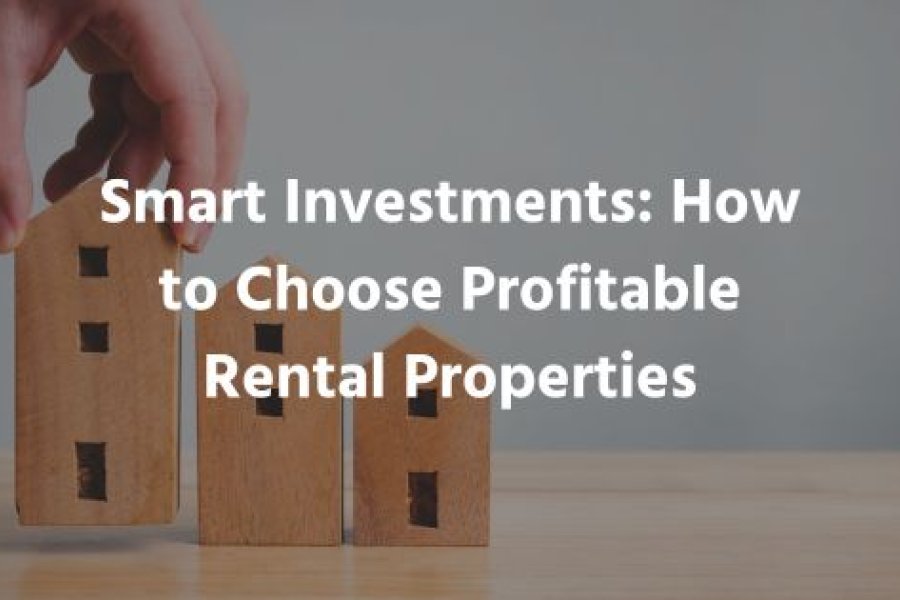
Embarking on a journey in real estate investment requires astute decision-making, particularly when it comes to selecting rental properties that promise both immediate returns and sustained profitability. In this article, tailored for landlords seeking a strategic edge in the competitive property market, we delve into the art of making smart investments into rental properties.
8 Factors to Consider For Smart Investments
Investing in rental properties can be a lucrative venture, but success requires careful consideration of various factors. Here are eight key considerations for making smart investments in rental properties:
1. Location
Considering the location is a fundamental aspect of making smart rental property investments. The location of a rental property significantly influences its appeal to tenants, vacancy rates and risks, and potential for long-term appreciation.
A prime location, characterized by factors such as safety, proximity to sought-after amenities, good schools, and accessibility to public transportation, not only attracts quality tenants but also ensures a steady demand for rental housing. Additionally, properties in desirable locations often experience higher appreciation rates, contributing to the overall profitability of the investment.
2. Market Research
Market research is instrumental in making smart rental property investments as it provides crucial insights into the local real estate landscape. Thorough market research allows investors to understand current rental trends, property values, and vacancy rates in a specific area.

This knowledge is invaluable in making informed decisions about potential rental income, operating expenses, and the overall profitability of an investment. By analyzing both present and future economic conditions, investors can gauge the long-term rental potential of a location.
In essence, market research empowers investors to align their investment strategies with the dynamics of the local market, ultimately enhancing the chances of selecting rental properties that offer solid returns on your investment and sustainable growth.
3. Property Condition
Considering the condition of a property is pivotal for making smart rental property investments. The state of a property directly impacts maintenance costs, tenant satisfaction, and overall profitability. Well-maintained properties not only attract responsible and long-term tenants but also minimize unexpected repair expenses.
Thoroughly assessing the property's condition before investment enables landlords to estimate potential renovation or maintenance costs accurately. This foresight allows for strategic financial planning, ensuring that the property remains a profitable and desirable rental. Moreover, a property in good condition is likely to experience less frequent vacancies, reducing the impact on rental income.
4. Rental Income vs. Expenses
Evaluating the relationship between rental income and expenses is a fundamental aspect of making smart rental property investments. This financial analysis provides a clear picture of the property's profitability and potential return on investment.
Landlords must calculate the expected rental income and compare it against the property's operating expenses, which include mortgage payments, property taxes, insurance, and maintenance costs. Ensuring that the rental income not only covers these expenses but also allows for a reasonable profit margin is essential for a successful investment.

This careful consideration helps landlords avoid financial strain, make informed decisions about pricing the rental property, and set realistic expectations for their returns. By maintaining a positive cash flow, landlords can secure the financial stability of their investment and enhance the overall success of their rental property venture.
5. Future Development and Infrastructure Plans
Considering future development and infrastructure plans is a strategic element in making smart rental property investments. Awareness of upcoming projects, such as new transportation hubs, commercial developments, or improvements in local infrastructure, can significantly impact the property's value and rental demand.
Investing in areas with positive development prospects not only enhances the property's long-term appreciation but also ensures sustained demand from potential tenants. Keeping abreast of future plans helps investors align their property purchases with the anticipated growth and development of the community, contributing to a well-informed investment strategy in the real estate market.
6. Tenant Demographics
Tenant demographics is one of the crucial aspects of making smart rental property investments. Understanding the characteristics and preferences of the target tenant population in a particular area allows landlords to tailor their properties to meet those needs effectively.
For instance, if the area attracts a large student population, investing in smaller, affordable units close to educational institutions might be prudent. This targeted approach not only enhances the property's appeal but also increases the likelihood of attracting tenants.

By aligning the property with the demographics of the local renter market, landlords can optimize occupancy rates and tenant satisfaction, ultimately contributing to the overall success of their investment.
7. Financial Viability and Financing Options
Considering the financial viability and exploring various financing options are pivotal in making smart rental property investments. Analyzing the costs associated with the investment, including mortgage interest rates, property taxes, insurance, and potential repairs, helps landlords determine the feasibility of the venture.
Understanding the financing options available, such as traditional mortgages, government-backed loans, or private financing, allows investors to choose the most suitable and cost-effective approach for their investment strategy. Evaluating the financial viability ensures that the investment aligns with the investor's budget, risk tolerance, and long-term goals.
8. Exit Strategy
Having a clear plan for the future allows investors to align their property decisions with long-term goals. Whether the strategy involves selling for capital gains, refinancing, or continuing to rent, understanding the potential exit scenarios helps guide decision-making throughout the investment journey.
This foresight enables investors to make informed choices about property improvements, financing, and overall management. A well-defined exit strategy ensures that the investment remains flexible and adaptable to changing market conditions.
Bottom Line
Having a profitable rental property demands a strategic approach, from selecting the right properties to ensuring efficient management. As landlords navigate this dynamic landscape, the consideration of property management companies becomes a pivotal factor in securing long-term success.
Schambs Property Management offers expertise and a commitment to maximizing the potential of your real estate portfolio. In the ever-evolving world of real estate, smart investments coupled with the support of reputable property management firms pave the way for sustained success and peace of mind!